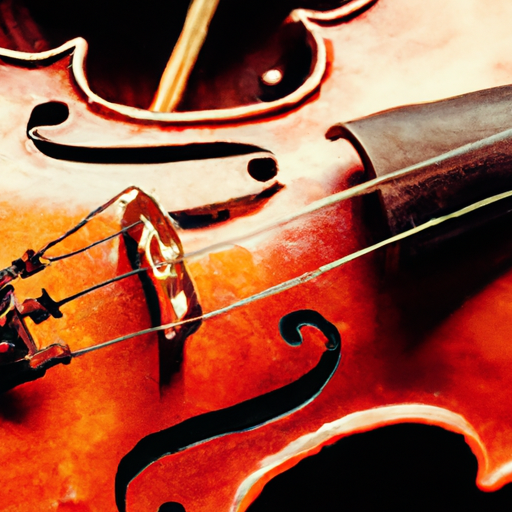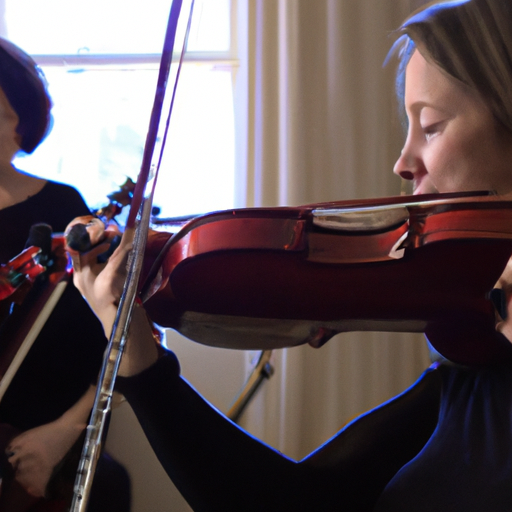
Learning to play a musical instrument can be a rewarding and fulfilling experience, and the violin is no exception. While it may seem like a daunting task, with the right guidance and practice, anyone can learn to play the violin. In this article, we will guide you through the process of mastering the violin, from the basics to playing popular pieces.

The violin is often referred to as the "king of instruments" due to its versatility and expressive capabilities. Learning to play the violin not only allows you to immerse yourself in the world of music, but it also provides numerous benefits for your brain and overall well-being. Playing the violin helps improve coordination, memory, and concentration, among other cognitive skills. Additionally, it can be a great stress-reliever and a means of self-expression.

Before you can start playing the violin, it's important to familiarize yourself with its various parts and understand how to hold it correctly. The violin consists of several main parts, including the body, neck, fingerboard, and bow. There are different types of violins, such as the acoustic violin and the electric violin, each with its own unique characteristics. To hold the violin, you should rest it on your shoulder and collarbone, while supporting it with your chin. This position allows for proper bowing and fingering techniques.
Reading sheet music is an essential skill for any violinist. Musical notation provides a roadmap for playing a piece, indicating the pitch, duration, and expression of each note. Learning to read sheet music involves understanding the musical staff, clefs, notes, rests, and various other symbols and markings. It may seem overwhelming at first, but with practice, you will become more comfortable and proficient in reading and interpreting music.
Effective practice is key to mastering the violin. It's important to establish a regular practice routine and set specific goals for each session. Breaking down complex pieces into smaller sections and focusing on difficult passages can help you make steady progress. It's also important to practice slowly and with accuracy, gradually increasing the tempo as you improve. Additionally, recording yourself and seeking feedback from a teacher or mentor can provide valuable insights and help you identify areas for improvement.
Developing good technique is crucial in playing the violin. Proper posture, hand positioning, and bowing techniques contribute to producing a beautiful sound and preventing injuries. Maintain a relaxed yet upright posture, with your feet shoulder-width apart and your spine straight. Position your left hand correctly, with your fingers curved and your thumb resting lightly on the back of the neck. When it comes to bowing, focus on maintaining a consistent and controlled motion, using the right amount of pressure and speed.
Learning scales, arpeggios, and finger exercises is essential for building a solid foundation on the violin. Scales help improve intonation and finger coordination, while arpeggios enhance finger dexterity and musicality. Finger exercises, such as trills and vibrato drills, strengthen your fingers and improve their flexibility. Practicing these exercises regularly will not only improve your technical skills but also train your ears to recognize different intervals and tonalities.
Playing popular pieces is a great way to apply your newly acquired skills and gain confidence on the violin. Starting with simple tunes like "Twinkle, Twinkle, Little Star" and gradually progressing to more complex pieces like "The Ash Grove" can be a rewarding journey. Break down each piece into smaller sections and practice them individually before putting everything together. Pay attention to dynamics, phrasing, and expression to bring the music to life.
Building a diverse repertoire is important for any violinist. As you progress, explore different genres and styles of music to expand your musical horizons. When selecting new pieces, consider your current skill level and choose pieces that challenge and inspire you. Practice new pieces slowly and methodically, focusing on accuracy and interpretation. Gradually increase the tempo and experiment with different dynamics and articulations to make the music your own.
Learning the violin can come with its fair share of challenges. Some common problems for beginner violinists include intonation issues, bowing inconsistencies, and left-hand finger placement. To overcome these challenges, it's important to practice with a metronome to improve rhythm and timing, use a tuner to train your ears for accurate intonation, and seek guidance from a qualified teacher or mentor. Remember that progress takes time and patience, so don't get discouraged and keep practicing.
Once you have mastered the basics and gained confidence on the violin, there are endless possibilities to explore. Consider joining a local orchestra or ensemble to experience the joy of playing with others. Take lessons with an advanced teacher to further refine your skills and learn more advanced techniques. Attend workshops, masterclasses, and violin festivals to immerse yourself in the violin community and learn from renowned violinists. Never stop learning and challenging yourself, and the violin will continue to bring you joy and fulfillment.
Learning to play the violin is a journey that requires dedication, patience, and a love for music. By following these steps and practicing consistently, you can fast track your way to mastering the violin and unlock a world of musical possibilities. Start your violin journey today and enjoy the beautiful sounds that this incredible instrument has to offer.